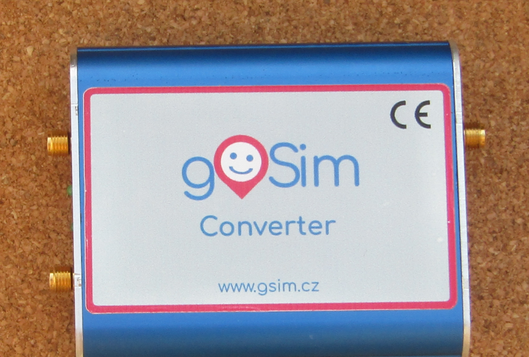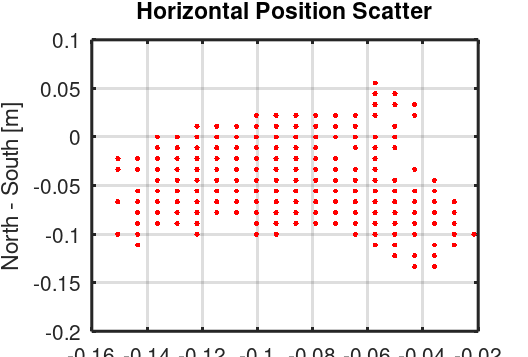GNSS Simulator gSim - Dual Frequency GPS Galileo Simulator

gSim uses commercial, cost-effective SDR receivers augmented by gSim Converter for signal generation. It enables the generation of perfectly synchronized and coherent signals on L1/E1 and L5/E5A frequencies.
gSim Converter can regulate signal levels within a range of 31 dB. A further increase of 30 dB is achieved by removing the attenuator.
The timing of the navigation signals and all carrier frequencies are derived from the frequency standard of the SDR transceiver. In case of higher requirements for accuracy and frequency stability, an external frequency standard can be used.
Single-frequency measurements can be performed without the gSim Converor. The signal generated by the SDR must be attenuated using an external attenuator.
The gSim converter integrates the software licensing dongle required for commercial and space gSim licenses. The gSim converter must be connected to the computer during gSim software operation.
- Dual frequency GPS L1 C/A, L5 I&Q, Galileo E1 B&C, E5A I&Q
- Simple (automatic) or advanced (manual) simulation scenario setup
- Static and dynamic scenarios
- 10 Hz user position input
- LLH or ECEF coordinates
- Variable user velocity (limited to 590 m/s for Demo and Commercial licenses)
- Line-of-slight and two reflected (multipath) signals
- Spoofed signals with the same or different navigation messages
- Navigation message update
- Navigation message modification
- Modeling the navigation message transmission errors
- Modeling the satellite orbit and atomic clock errors
- Klobuchar ionospheric propagation model
- Creating complex simulations using third-party math software
- A signal propagation model dependent on the user’s position and the azimuth and elevation of the navigation satellite
- Complex ionospheric propagation model
- Atmospheric effects like scintillation
- Jamming and spoofing
- Dynamic stress
- Multi-core processor support
- Cost-effective SDR signal transmitters
- gSim Converter (as external add-on HW) for dual L1/E1 and L5/E5A signal generation
- Commercial, Space, and Demo Software licenses
Simulation Scenarios
Static Scenario – Nizbor
Nizbor is a village located on the banks of the beautiful Berounka River in central Bohemia. Within the village, there is a Celtic oppidum, and a castle is situated on a nearby hill. Adjacent to the castle, we have a waypoint with magical coordinates 50°N,14°E, which we call Nizbor.
The figures present the scatter plots of static user scenarios in Nizbor way point measured by a dual-frequency GPS – Galileo receiver. The signal was replayed by a BladeRF (left) and HackRF (right) SDR.
3D scatter plots, static position errors, as well as other static and dynamic simulation scenarios, are introduced in gsim-simulation-guide.pdf
Are you interested in this technology?
Multipath Error Envelope
Multipath propagation is one of the main sources of position errors in GNSS. The receiver’s capability to suppress multipath propagation is measured using a signal model with a Line of Sight (LOS) and one delayed reflected signal. The results are graphically expressed as a multipath error envelope plot. The left figure presents a multipath error envelope of the GPS L1 channel equipped with a double delta correlator. The right figure shows the multipath error envelope of the Galileo E1 channel.
Presented Multipath Error Envelopes were measured by gSim using a reflected signal generator.
Leap Second
Adding or removing leap seconds to UTC is used to correct UTC to astronomical time. gSim allows testing the response of a GNSS receiver to a leap-second event.
LEO Satellite GPS Receiver Test
gSim can test space GNSS receivers. The figure presents the test results of the piNav GPS receiver in Low Earth Orbit. The piNav GPS receiver was developed by Pavel Kovar for positioning the LEO CubeSats. The receiver is equipped with an orbit propagator that enables Dead Reckoning navigation when the GPS signal is out.
Notice a short simulated signal dropout at time 2100 s. The outage of the GPS signal was bridged with the help of the propagator.
Would you like to try gSim before buying?
Write us for demo version of gSim.
The Demo license is limited to a single frequency. It generates only GPS C/A and Galileo E1
signals. The generation of other signals is automatically disabled. The simulation duration
is set to 60 seconds.
You can BUY your own licence for commercial use
You can order COMMERCIAL version of gSim with speed limit up to 590 m/s
PRICE: 3 800 EUR plus 60 EUR shipping
You can order SPACE version of gSim without speed limit
(How to buy the SPACE version? Buy COMMERCIAL version first. We will ask for export licence. If an export license is obtained, the customer will be asked to pay extra for the price of the unrestricted (SPACE) version. We will send the gSim without speed limitation and a new license file by e-mail which will be used with the already purchased gSim Converter. Failure to obtain an export license is not grounds for return COMMERCIAL version. Export of the unrestricted (SPACE) version is possible to countries for which an EU General Export Permit or National Export Permit applies, or if an individual export permit can be obtained.
PRICE: upon request
We will send you a license key and invoice after payment.
GNNS The gSim Simulator (with limited and unlimited speed) can be used by the owner of the gSim Converter who has received the license file for that software version. The serial number and license file number must match.
There are no restrictions on the sale of the speed-limited version of gSim.
The documentation gives the configuration of the computer and software on which gSim has been tested. The manufacturer makes every effort to ensure that gSim can be run on different hardware and under different versions and distributions of Linux. However, full compatibility cannot be guaranteed.
gSim is shipped as is. Damages caused by the product are the responsibility of the user, the manufacturer disclaims liability.
In case of a bug fix request, the customer is obliged to provide all necessary Input files, Intermediate files, configuration files, scenario descriptions, and defect descriptions so that the manufacturer can reproduce and fix the bug. The manufacturer undertakes to release a new software version with the bugs removed within a reasonable time.
The manufacturer undertakes to remove only defects that are technically removable.
The warranty period for gSim Converter is 6 months. The procedure for dealing with warranty repairs in the event of problems is as follows: the customer shall deliver at his own expense a complete defective piece of gSim Converter that has not been tampered with. The manufacturer will assess the defect and, if accepted, repair. In case of non-acceptance of the warranty, the manufacturer will offer an out-of-warranty repair.
The purchaser is responsible for mechanical damage to the cables and gSim Converter. Defects are resolved by out-of-warranty service.
All gSim products (software, hardware, supporting files, services), unless otherwise agreed in writing, are subject to these Terms and Conditions.
The gSim simulator is subject to the following License Agreement.
The supporting scripts and data, like gSim GUI, simulation scenarios, GNU Octave scripts for scenario generation and data analysis, as well as GPS and Galileo source constellations, are distributed under GPL v1 software license.
Are you interested in this technology?
If you are interested in our technology, products and services, please contact our Technology Transfer Coordinator by phone or email:









